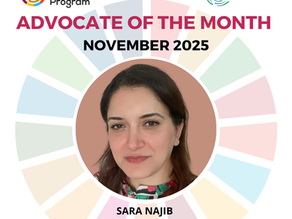A BRIDGE BETWEEN THE CLASS AND THE WORLD
- SDSN Youth

- Jan 23, 2023
- 3 min read
Written by Esra Karahan, Global Schools Advocate
Edited by Abigail Chifusa, Global Schools Program Project Officer

Climate zones

Climate zones
Esra Karahan has been working as a Global Schools Program (GSP) Advocate for three months. During this journey, various Education for Sustainable Development (ESD) activities were conducted in his school, İSTEK Kasgarli Mahmut Primary School.
Esra said she had a great experience being part of the program as an English teacher. In her words, “I believe that thanks to this program, advocates all around the world help to create a positive atmosphere by working with people who live in communities collaboratively. Also, getting the chance to observe that students are eager to help people with their outstanding ideas and solutions is inspiring".
Below are some of the activities that GSP Advocate Esran Karahan has carried out with students in her school.
First, the primary school students carried out a research process on the Sustainable Development Goals (SDGs) and decided to work on one of these goals by designing posters with their group members. Third-grade students prepared posters about SDG 13: Climate Action. Brainstorming about the differences between climate zones, students created a mind map to observe the connections and concepts of different climate zones all around the world. English teachers split students into two heterogeneous groups and asked provoking questions such as: “What are the factors that cause climate change?” and “What are the relationships between temperature and climate zones?” Students reflected on their ideas and innovative solutions on their group posters.
Second, at the beginning of November, some of the volunteer students from third grade carried out a detailed mind map project about SDGs 1: No Poverty and 10:Reduce Inequalities. Supporting students’ agencies is an important role according to İSTEK Kasgarli Mahmut Primary School's vision and mission. Therefore, English teachers assigned some differentiated tasks to students to enforce their ownership and voice. In the scope of the activity, Peri Erdoğan (9) and Tanem Özkan (9) chose the goals they were eager to learn more about and filled out the maps to present their findings to the learning community.

My research map (Goal 10)

My research map (Goal 1)
Within the frame of “How We Express Ourselves” interdisciplinary theme of PYP, primary school students needed to make practices about their writing skills in different types of written languages to express their ideas and show their reflections. While they were learning the elements of writing stories in one of the integrated lessons, James Efe Şengül (9) came up with an idea and offered to write a story about SDGs. English teacher, Esra Karahan, created an online book from the Book Creator website to provide an environment for writing students’ stories interactively. Students wrote different stories as a group of two or four people. Primary students created stories called “Our Mission: SDGs, SDGs Class, Equality in the Classroom, The Secret Mission UnderWater, and The Eagle and The Koala.” After gathering the stories in an online book, the book was published virtually.
Click here to read a book with stories created by Esra and her students called “SDGs: Planet Heroes Stories.”

Story Book Cover Page
“One of the schools from Canada read our book, so the students who wrote the book took into action to raise their voices in the community,” said Esra Karahan.
Finally, primary students prepared posters by using Canva. They activated the pre-knowledge about SDGs as communicators and inquirers throughout the project. Students presented their posters to take SDGs to the street in their school community. Students’ posters illustrated primary school bulletin boards.




















With a time duration calculator, duration tracking becomes more dependable.
The replay value is what adds even more fun to Space Waves. Because each level is based on a different music, each try seems novel and thrilling. Players are urged to surpass their own best scores, open up new stages, and even pit their reflexes and rhythm against pals.